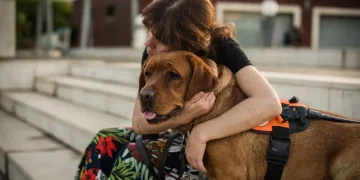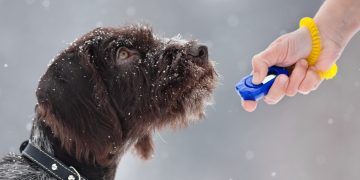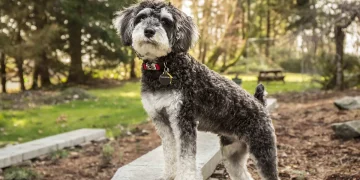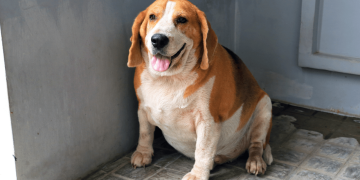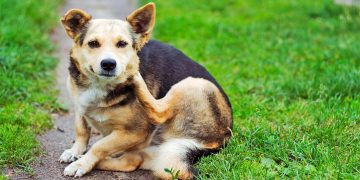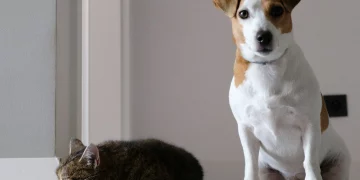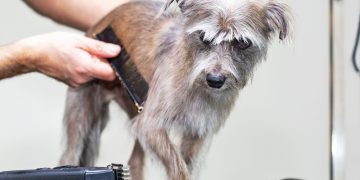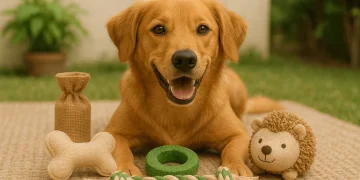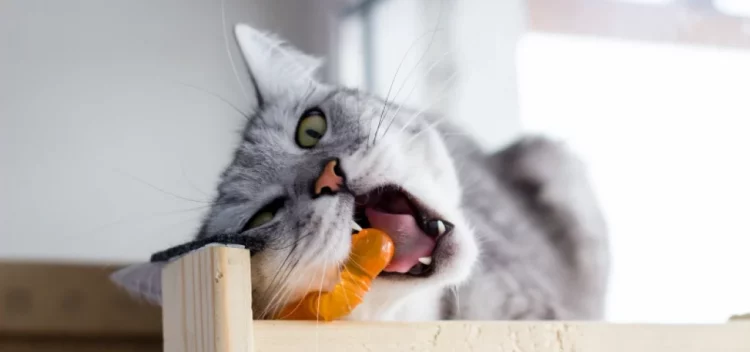If you’ve ever walked into a room only to find your dog chewing on your favorite shoes, the corner of the coffee table, or even the remote control, you’re not alone. Chewing is a common behavior for dogs, but when it becomes excessive or destructive, it can lead to frustration for both you and your pet. Fortunately, this behavior can be corrected with patience, understanding, and proper training.
In this article, we’ll explore why dogs chew on things, the potential causes behind this behavior, and, most importantly, how you can effectively train your dog to stop chewing inappropriate items.
Why Do Dogs Chew?
Before jumping into training techniques, it’s important to understand why your dog may be chewing. Dogs chew for several reasons, and identifying the root cause of the behavior is the first step in addressing it.
1. Teething (For Puppies)
Puppies are notorious for chewing on everything, and it’s often a result of teething. When puppies are between 3 to 6 months old, they go through the process of losing their baby teeth and growing in their adult teeth. This can cause discomfort and itching in their gums, leading them to chew on objects to relieve the pain.
2. Exploration and Boredom
Dogs, especially young ones, explore the world with their mouths. They may chew on things simply because they’re curious or trying to explore their environment. Additionally, if a dog doesn’t get enough physical exercise or mental stimulation, they may turn to chewing as a way to pass the time.
3. Anxiety or Stress
Chewing can be a coping mechanism for dogs experiencing separation anxiety, stress, or fear. Dogs may chew on furniture, shoes, or household items when left alone, as a way to self-soothe or relieve anxiety.
4. Lack of Proper Chew Toys
If your dog isn’t provided with appropriate chew toys, they may resort to chewing on items around the house. Without an outlet for their chewing instinct, they may find your shoes, furniture, or cables more interesting.
5. Attention-Seeking Behavior
Sometimes, dogs chew to get attention from their owners, especially if they have learned that chewing results in a reaction, even if it’s negative (like scolding or chasing them).
6. Hunger or Excess Energy
If a dog isn’t getting enough to eat or exercise, they may chew out of frustration or pent-up energy. This is often seen in dogs who are left alone for long periods without adequate physical or mental stimulation.
How to Correct Your Dog’s Chewing Behavior
Now that we understand why dogs chew, let’s look at how you can address and correct this behavior. With consistency and patience, most dogs can learn what’s appropriate to chew on and what’s off-limits.
1. Provide Appropriate Chew Toys
One of the most important things you can do is offer your dog plenty of appropriate chew toys. This gives them a proper outlet for their chewing instincts and can keep them occupied.
- Variety of Toys: Choose different types of toys, such as rubber chew toys, dental chews, bones, and stuffed toys. Rotate the toys regularly to keep your dog interested.
- Interactive Toys: Puzzle toys or treat-dispensing toys are a great way to keep your dog engaged mentally, reducing the temptation to chew on inappropriate objects.
2. Use Positive Reinforcement
Positive reinforcement is one of the most effective methods for changing behavior. Instead of punishing your dog for chewing on furniture or shoes, reward them when they chew on an appropriate toy.
- Praise and Treats: When your dog chooses to chew on their toy instead of something they shouldn’t, immediately praise them and give them a treat. This reinforces the behavior you want to see.
- Redirect Attention: If you catch your dog chewing on something they shouldn’t, gently redirect them to a toy. Once they start chewing on the toy, praise them enthusiastically.
3. Manage the Environment
If your dog is prone to chewing on furniture or household items, it’s important to manage their environment to prevent access to these objects.
- Dog-Proof Your Home: Keep shoes, electrical cords, remote controls, and other valuable items out of your dog’s reach. Use baby gates or crate training to confine your dog to certain areas of the house when you’re not able to supervise them.
- Use Deterrents: There are sprays available that can deter dogs from chewing on furniture. These sprays are made with ingredients like bitter apple or citrus, which dogs find unpleasant. Spraying these on furniture or cords can discourage chewing.
4. Crate Training
Crate training is an excellent way to manage your dog’s behavior, especially when you’re not home to supervise. A crate can provide a safe, comfortable space for your dog while you’re away, and it helps prevent destructive chewing.
- Introduce the Crate Slowly: Make sure to introduce your dog to the crate gradually, using positive reinforcement. Don’t use the crate as a punishment; instead, make it a cozy place where your dog can relax.
- Leave Chew Toys in the Crate: If your dog is prone to chewing when left alone, leave safe chew toys in the crate to keep them occupied.
5. Increase Physical and Mental Stimulation
Dogs that are bored, lonely, or under-exercised may turn to chewing as a way to release pent-up energy. Increasing your dog’s physical activity and mental stimulation can help reduce the urge to chew.
- Daily Walks: Make sure to take your dog on daily walks or runs to burn off excess energy. Depending on your dog’s breed and age, they may need more or less exercise.
- Interactive Play: Play games with your dog, such as fetch, tug-of-war, or hide-and-seek. These games not only provide physical exercise but also engage your dog’s mind.
- Training Sessions: Short training sessions can provide both mental and physical stimulation. Teaching your dog new tricks or practicing obedience commands can keep them mentally engaged and reduce boredom-induced chewing.

6. Address Anxiety and Stress
If your dog is chewing due to anxiety, especially separation anxiety, it’s important to address the underlying emotional issue.
- Gradual Desensitization: If your dog is anxious when left alone, try to gradually get them used to being alone by starting with short periods of time and gradually increasing the duration.
- Comfort Items: Leave your dog with items that smell like you, such as a worn t-shirt, to provide comfort when you’re away. Some dogs also benefit from calming products, such as pheromone diffusers, calming collars, or anxiety wraps.
- Consult a Vet or Behaviorist: If anxiety is severe, consider consulting a veterinarian or a professional dog trainer for additional support and guidance. In some cases, medication or behavior modification techniques may be necessary.
7. Teach the “Leave It” Command
Teaching your dog the “leave it” command is an effective way to stop them from chewing on inappropriate objects. The “leave it” command tells your dog to stop what they’re doing and focus on you instead.
- Start with Treats: Hold a treat in your hand and let your dog sniff it. Close your hand around the treat and say “leave it.” When your dog stops trying to get the treat, reward them with a different treat.
- Apply the Command to Objects: Once your dog understands “leave it” with treats, apply the command to other objects they may be chewing on, like furniture or shoes. When they stop chewing, reward them.
8. Manage Hunger and Energy Levels
Ensure that your dog is getting enough food and exercise. Sometimes chewing can be a sign of hunger or excess energy. Adjust your dog’s feeding schedule and provide plenty of opportunities for physical and mental stimulation.
- Regular Feeding: Make sure your dog is getting enough food, and consider dividing their meals into two or more smaller portions throughout the day.
- More Playtime: Incorporate playtime into your daily routine to tire your dog out and reduce the urge to chew out of boredom.
Conclusion
Chewing is a natural behavior for dogs, but when it becomes excessive or destructive, it can be frustrating. By understanding the underlying causes of your dog’s chewing and taking proactive steps to address the behavior, you can help them learn what’s appropriate to chew on and what’s not. Remember, consistency, patience, and positive reinforcement are key to successful behavior modification.
Provide your dog with appropriate chew toys, offer plenty of physical and mental stimulation, and create a safe environment that discourages destructive chewing. With time and effort, you’ll be able to correct this behavior and enjoy a more peaceful, less destructive household.




